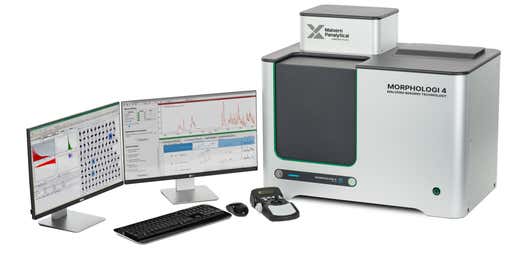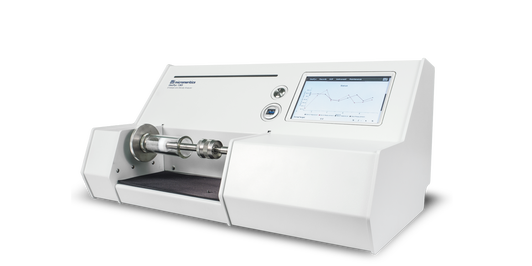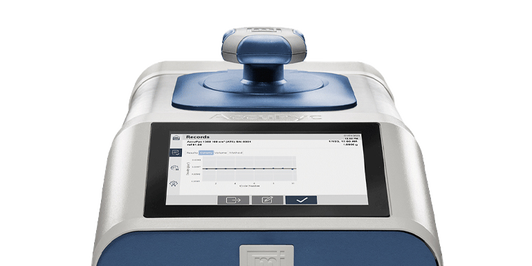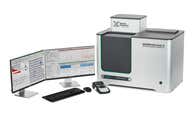Análisis de polímeros


La variedad de aplicaciones de los polímeros es inmensa, por lo que no es de extrañar que las técnicas de análisis de los polímeros también sean muy variadas. Antes de que los materiales y productos poliméricos puedan pasar del laboratorio de I+D a la línea de producción, o de la línea de producción al cliente final, se debe probar su calidad y rendimiento.
Malvern Panalytical ofrece las soluciones de vanguardia para cada necesidad de análisis de polímeros, incluidos la determinación de cómo se distribuyen las cadenas de polímeros con la revisión del contenido de catalizador con fluorescencia de rayos X (XRF, del inglés "X-Ray Fluorescence"), el monitoreo de la cristalinidad con difracción de rayos X (XRD, del inglés "X-Ray Diffraction") o la detección del tamaño y la morfología de las partículas con difracción láser y análisis de imágenes estáticas.





La fluorescencia de rayos X (XRF, del inglés "X-Ray Fluorescence") es una técnica de análisis elemental comprobada utilizada en muchas industrias. Cuando los rayos X golpean átomos en un material, los átomos emiten "huellas" fluorescentes que indican la composición elemental del material. Estos datos son fundamentales para el cumplimiento de las directivas globales relativas al contenido de metales tóxicos, tales como RoHS-3, WEEE y ELV.
Malvern Panalytical proporciona instrumentos XRF y materiales de referencia de vanguardia para la caracterización de polímeros, incluidos ADPOL para el análisis de aditivos y rellenos, y TOXEL para el análisis exacto de elementos tóxicos.

Investigar la estructura cristalina y la composición de fase de los polímeros es fundamental para comprender y optimizar sus características de rendimiento. La disposición de las regiones cristalinas y amorfas dentro de un polímero influye directamente en su resistencia mecánica, estabilidad térmica y resistencia química, entre otras propiedades.
La oferta de difracción de rayos X (XRD, del inglés "X-Ray Diffraction") de Malvern Panalytical incluye dos difractómetros de rayos X de primera clase: el Aeris y el Empyrean.
Ambos instrumentos proporcionan una característica crucial para la caracterización de polímeros: están diseñados para modificarse fácilmente con accesorios de hardware y software nuevo. Por ejemplo, la estructura modular de Aeris permite la fácil adición de accesorios y complementos, y el concepto PreFIX de Empyrean permite a los usuarios cambiar entre diferentes configuraciones sin procedimientos de realineación laboriosos, lo que logra una flexibilidad inigualable.
Esta flexibilidad también respalda una mayor sostenibilidad. Con la creciente inquietud por el problema de los microplásticos, es probable que los reglamentos futuros planteen requisitos más exigentes para la detección de polímeros a fin de evitar daños medioambientales. Los instrumentos XRD preparados para el futuro están listos para cualquier nuevo proceso analítico, lo que proporciona una perspectiva más profunda del impacto ambiental de los polímeros.
La forma más inteligente de medir el tamaño de las partículas
El análisis de distribución del tamaño de partículas cumple una función crucial en el campo de los polímeros, ya que proporciona información esencial sobre las materias primas y los productos terminados. Este proceso analítico ayuda a caracterizar el rango de tamaño y la distribución de las partículas, lo que influye directamente en las propiedades mecánicas, térmicas y químicas del polímero.
La difracción láser mide la variación angular en la intensidad de un rayo láser dispersado y utiliza esto para generar información sobre las distribuciones de tamaño. El analizador de tamaño de partículas Mastersizer 3000+ es un instrumento versátil y compacto que se alinea con los requisitos analíticos y los flujos de trabajo exigentes de los laboratorios actuales.

Caracterización rápida y automatizada de partículas específicas de los comp...
La morfología de los polímeros es esencial para examinar cómo la disposición, la ramificación y el peso molecular de las cadenas de polímeros influyen en las propiedades estructurales y mecánicas de un polímero. La ramificación y la distribución del peso molecular son particularmente cruciales.
La disposición de las cadenas de polímeros, incluido el grado de ramificación y la distribución de los pesos moleculares, desempeña un papel importante en la determinación de características como la resistencia mecánica, la viscosidad, el comportamiento térmico y la resistencia química. Por ejemplo, la ramificación puede influir en la forma en que las cadenas de polímeros se enreden e interactúan, lo que afecta la densidad y flexibilidad del material. De manera similar, las variaciones en el peso molecular afectan la procesabilidad y el rendimiento general del polímero, en cuanto a que los pesos moleculares más altos a menudo generan una mayor dureza y resistencia.
Morphologi 4-ID está específicamente diseñado para analizar polímeros. Proporciona descripciones morfológicas detalladas de las muestras de partículas a través del análisis de imágenes estáticas, lo que permite la medición de diversos parámetros, tales como el tamaño y la forma de las partículas. Este sistema es particularmente eficaz para caracterizar las partículas de polímeros, incluidos aquellos utilizados en aplicaciones como los procesos de fusión de lecho de polvo.
Morphologi 4-ID combina la adquisición de imágenes automatizada con capacidades de identificación química, lo que permite el análisis completo de las estructuras y propiedades del polímero, algo esencial para optimizar el rendimiento del material en diversas aplicaciones.
Con su gama de propiedades únicas, los polímeros nuevos y avanzados desempeñan un papel importante en el impulso hacia materiales más sostenibles. El desarrollo, la fabricación y el aseguramiento de la calidad de estos polímeros requieren las herramientas y la experiencia más avanzadas. Es por esto que Malvern Panalytical es su socio en el descubrimiento.
Nuestros especialistas en aplicaciones son expertos en su campo y pueden ayudarlo a combinar su conocimiento con nuestra experiencia en medición. Desde la instrumentación hasta la capacitación del operador, la asistencia en la preparación de muestras y el soporte de mantenimiento, estamos listos para ayudarlo en cada paso de su proceso de desarrollo y fabricación de polímeros.